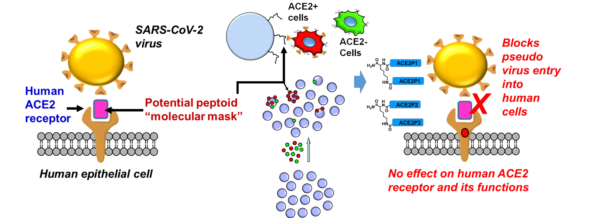Viral infections pose a significant threat to global health, with the potential to cause pandemics, emergence of new pathogens, and severe morbidity and mortality. The current COVID-19 pandemic has highlighted the need for effective antiviral therapeutics. A promising avenue in antiviral drug discovery is targeting virally encoded proteases, such as papain-like protease (PLpro), which play critical roles in virus replication and evasion of the host immune response. In this article, we explore the PLpro Library and its potential in advancing antiviral drug development.
Understanding PLpro and Viral Replication:
PLpro is a cysteine protease encoded by several RNA viruses, including coronaviruses, alphaviruses, and arteriviruses. PLpro participates in the proteolytic processing of viral polyproteins, leading to the generation of functional viral proteins necessary for viral replication and assembly. In addition, PLpro also evades the host immune response by cleaving ubiquitin and interferon-stimulated gene 15 (ISG15), which are essential components of the antiviral defense system.
Role of the PLpro Library:
The PLpro Library comprises a collection of small molecule inhibitors that specifically target the catalytic activity of PLpro. These inhibitors are designed through structure-based drug design, exploiting the three-dimensional structure of the protease to optimize potency and selectivity. The library enables researchers to screen and identify potential lead compounds, which can serve as starting points for further optimization and development of antiviral therapeutics.
Potential Advantages of Targeting PLpro:
Targeting PLpro offers several advantages for antiviral drug development. Firstly, PLpro plays an essential role in virally encoded proteases, making it a promising target for broad-spectrum antiviral drugs. Secondly, PLpro’s propensity to evade the host immune response and contribute to disease pathogenesis suggests that it could also serve as a viable therapeutic target for inflammatory disorders. Finally, as PLpro is a viral target, it is less prone to developing resistance than cellular targets.
Applications in COVID-19:
PLpro has emerged as a potential target for COVID-19 therapeutics. SARS-CoV-2, the virus responsible for COVID-19, encodes a PLpro that is essential for viral replication and immune evasion. Targeting PLpro could offer a novel approach for controlling viral replication and mitigating the severity of COVID-19. Additionally, the PLpro Library could provide a valuable resource for identifying and optimizing potential therapeutic compounds against SARS-CoV-2 and other coronaviruses.
Future Directions and Challenges:
While the PLpro Library shows promise in the development of antiviral therapeutics, challenges remain. Similar to other viral targets, developing PLpro inhibitors that are both highly potent and selective poses a significant challenge. Moreover, strategies for achieving effective delivery of these inhibitors to target cells and tissues require further exploration.
Conclusion:
The PLpro Library represents a significant advancement in antiviral drug discovery and the development of potential therapeutics for viral infections. By selectively targeting PLpro, researchers aim to counteract the proteolytic processing of viral polyproteins and enhance viral clearance. The COVID-19 pandemic highlights the critical need for effective antiviral drugs, and targeting PLpro presents a valuable opportunity for advancing therapeutics for COVID-19 and other viral infections. As research in this field continues to progress, the PLpro Library offers a crucial resource in the development of novel antiviral drugs, bringing us closer to a world free of the threat of viral diseases.



